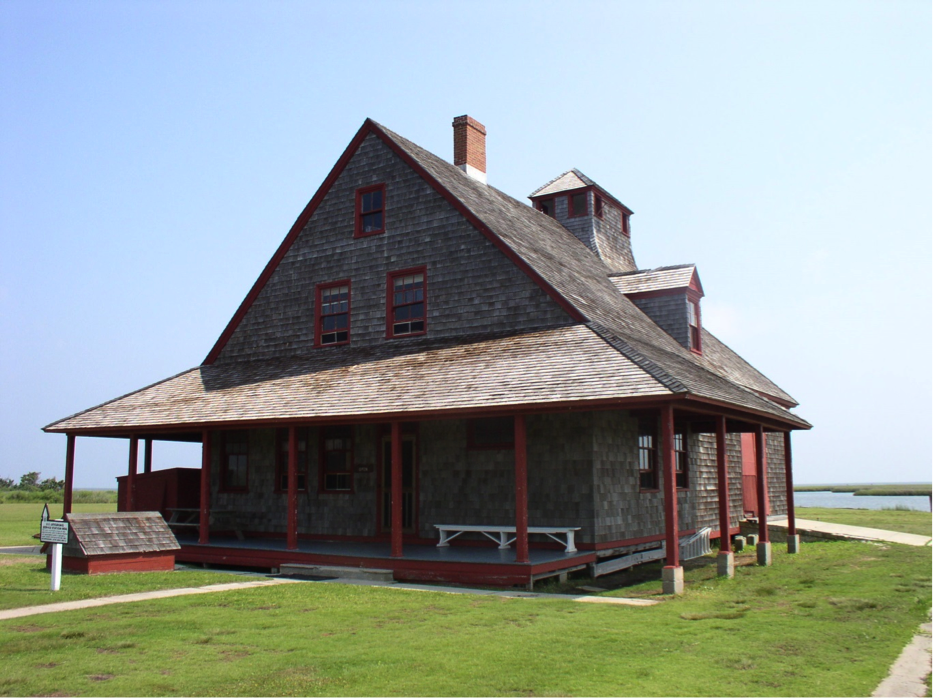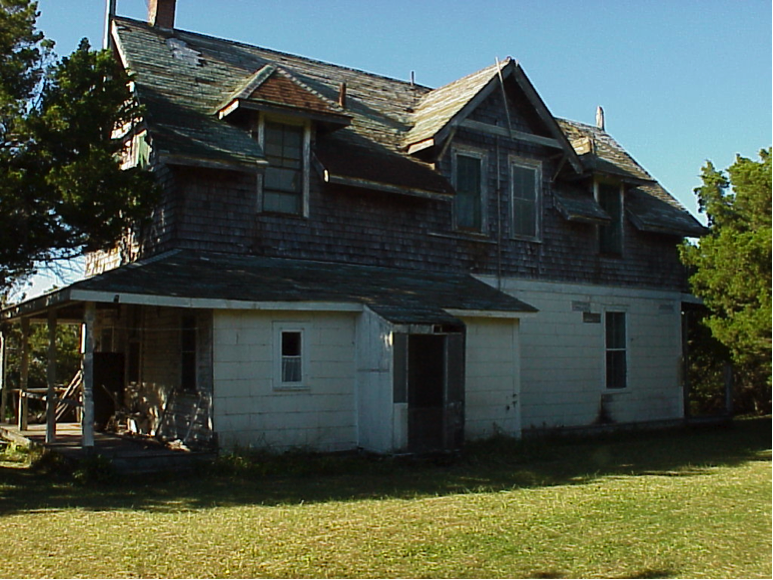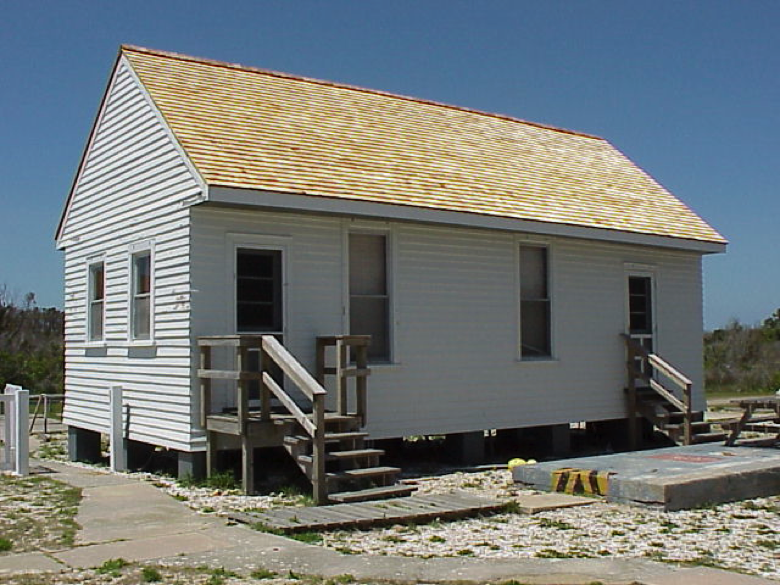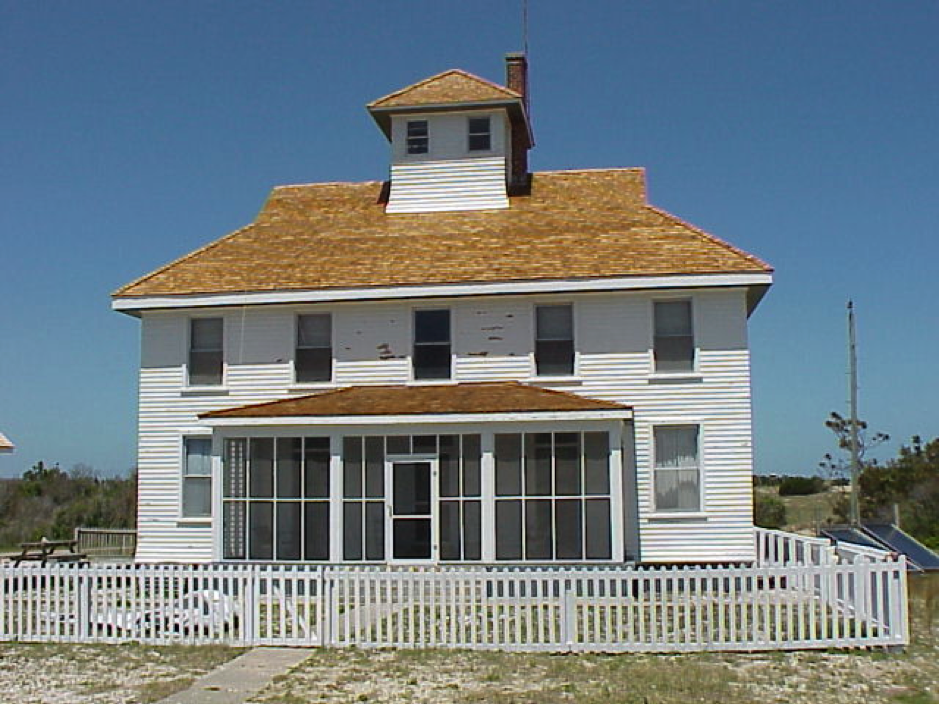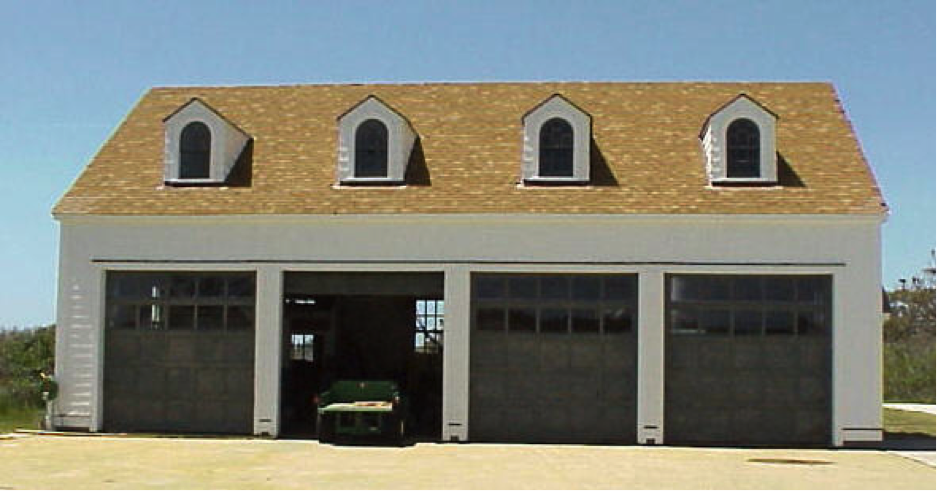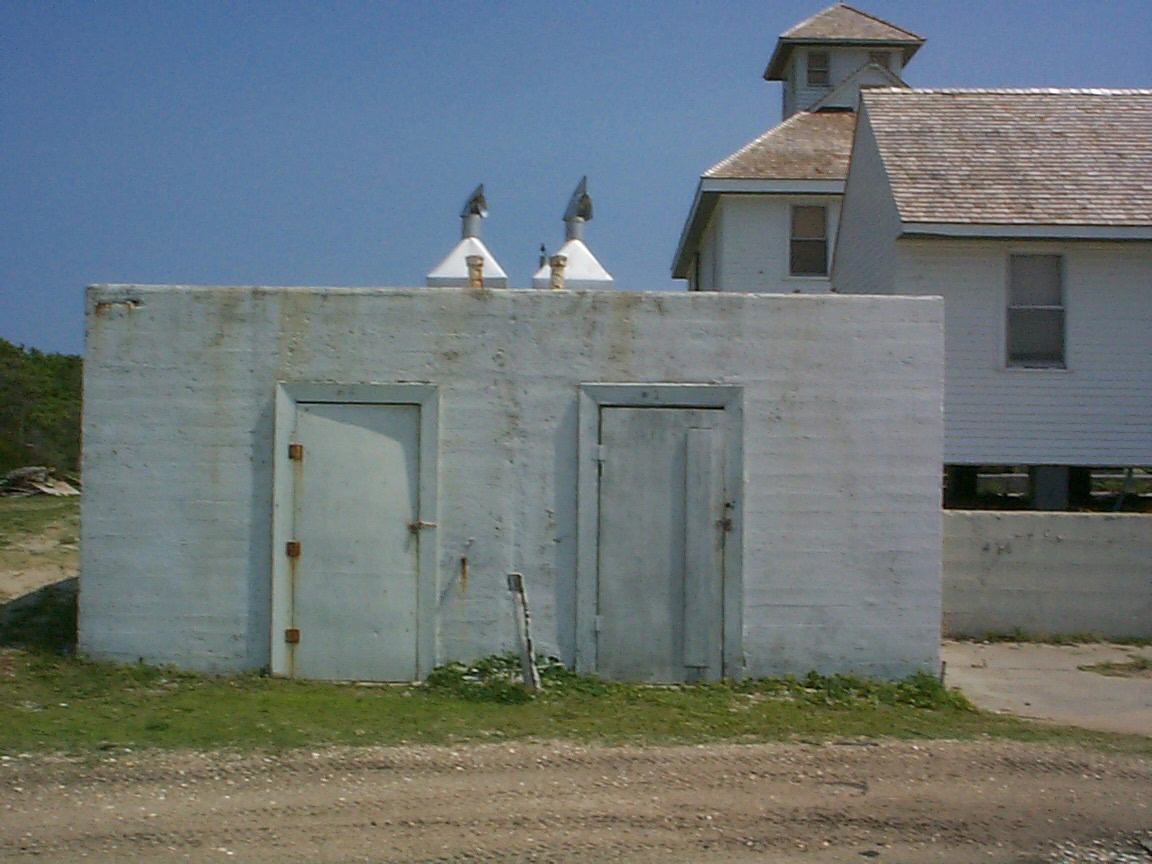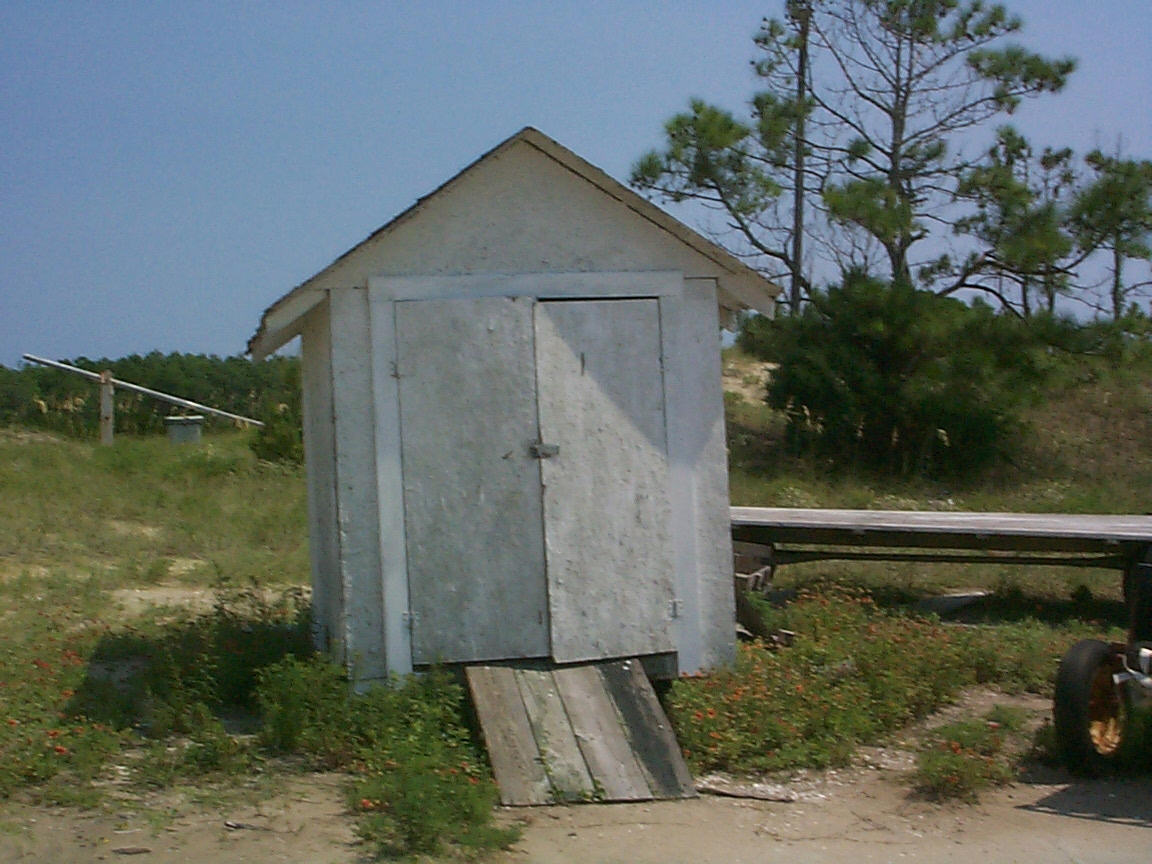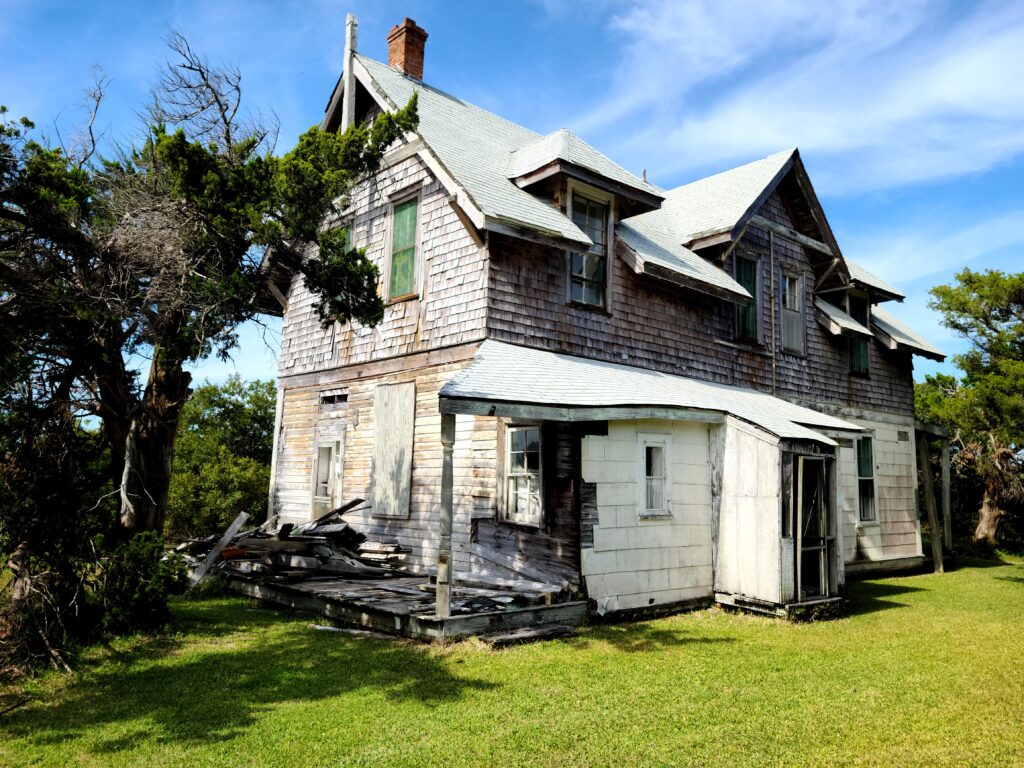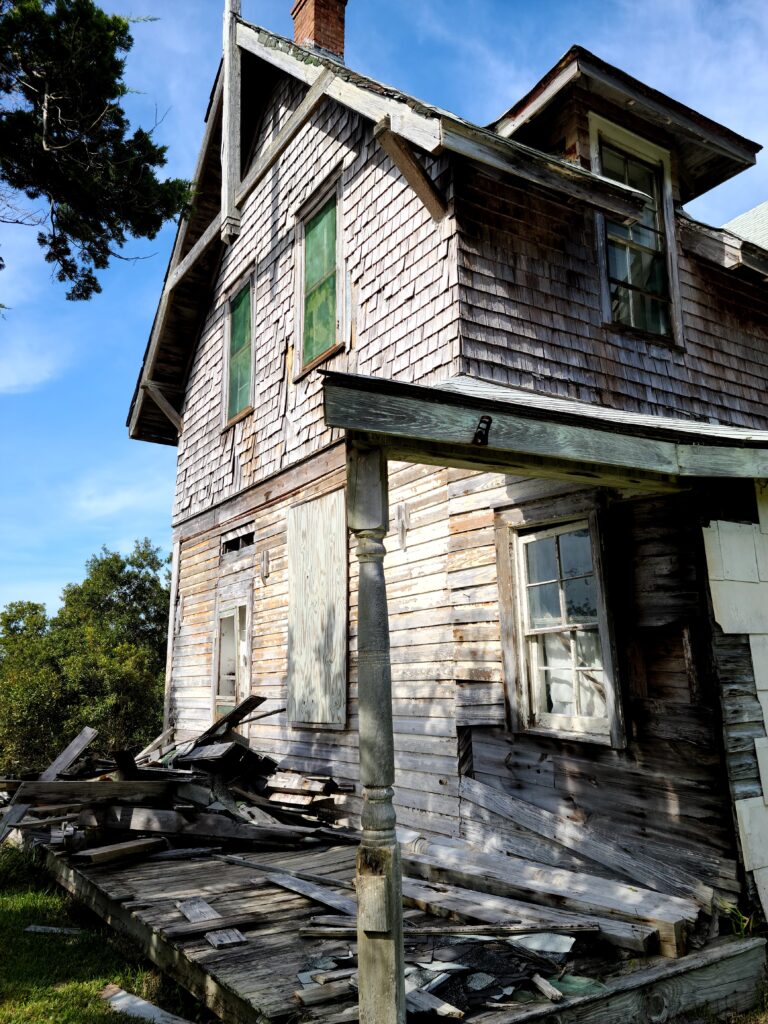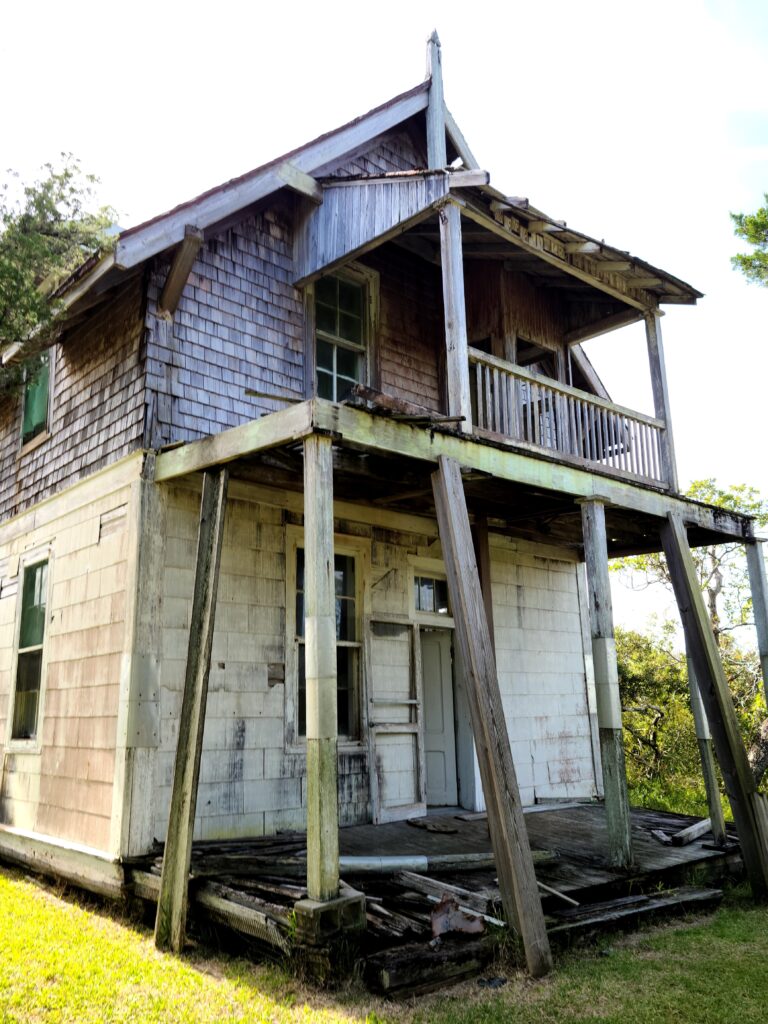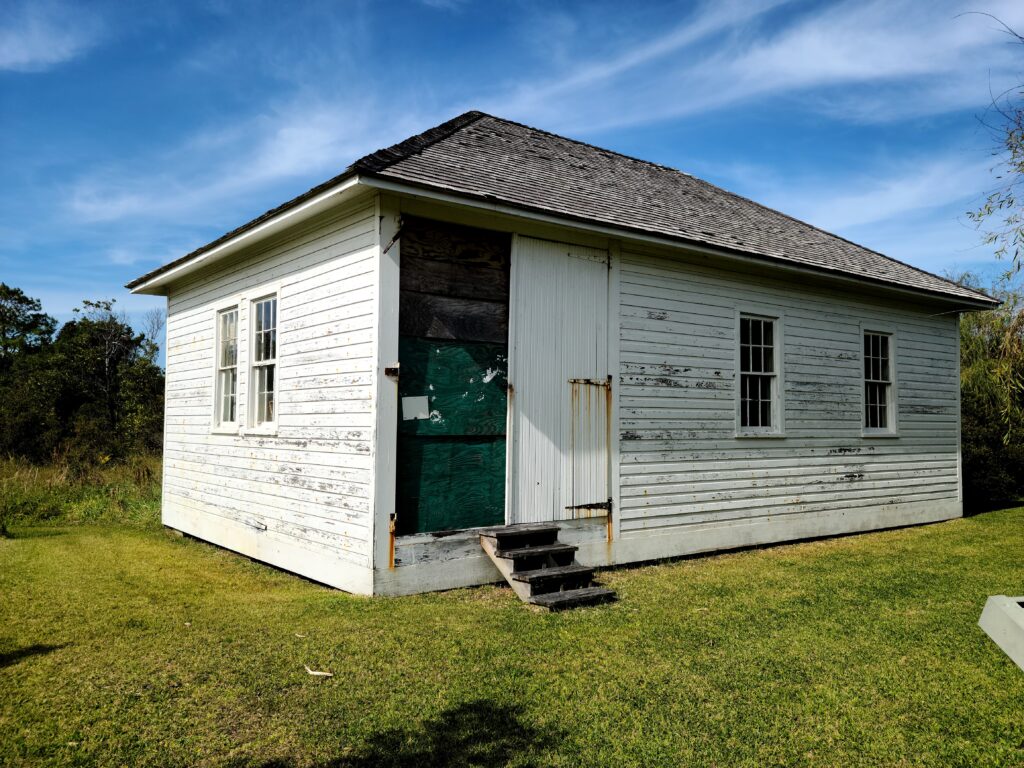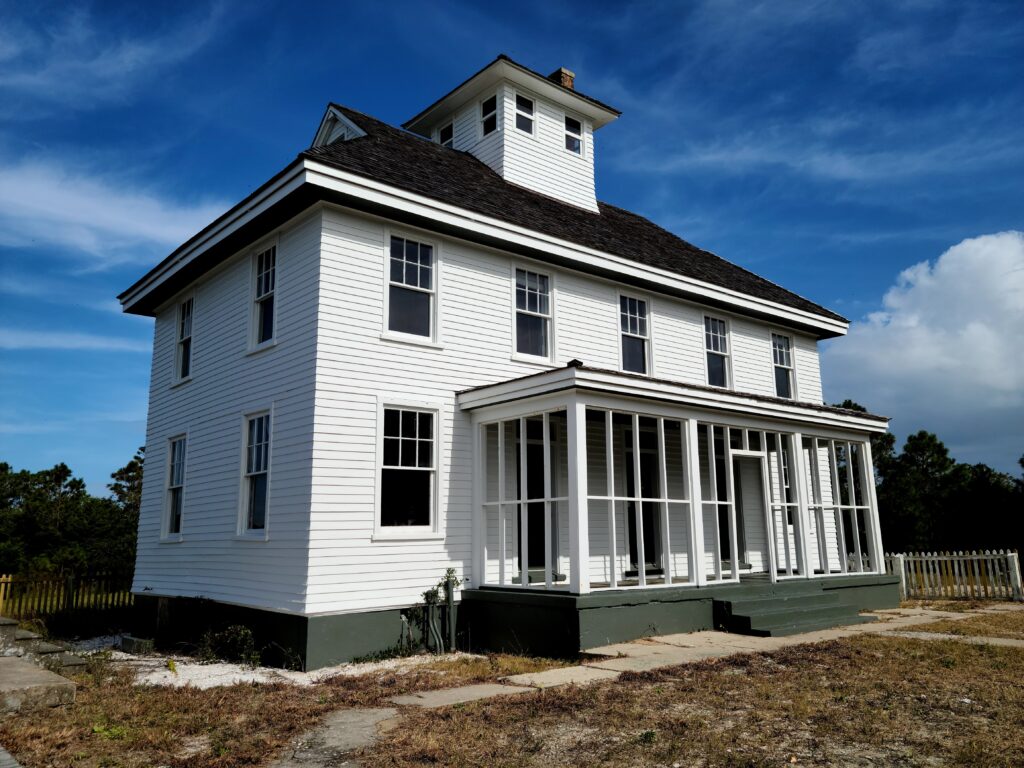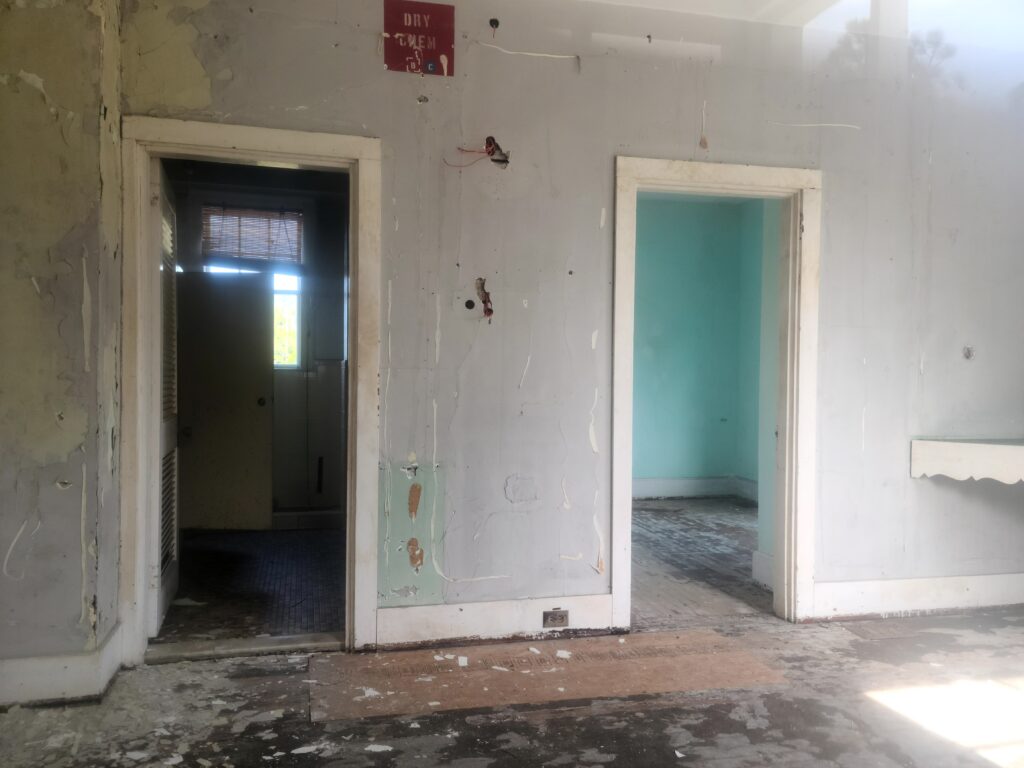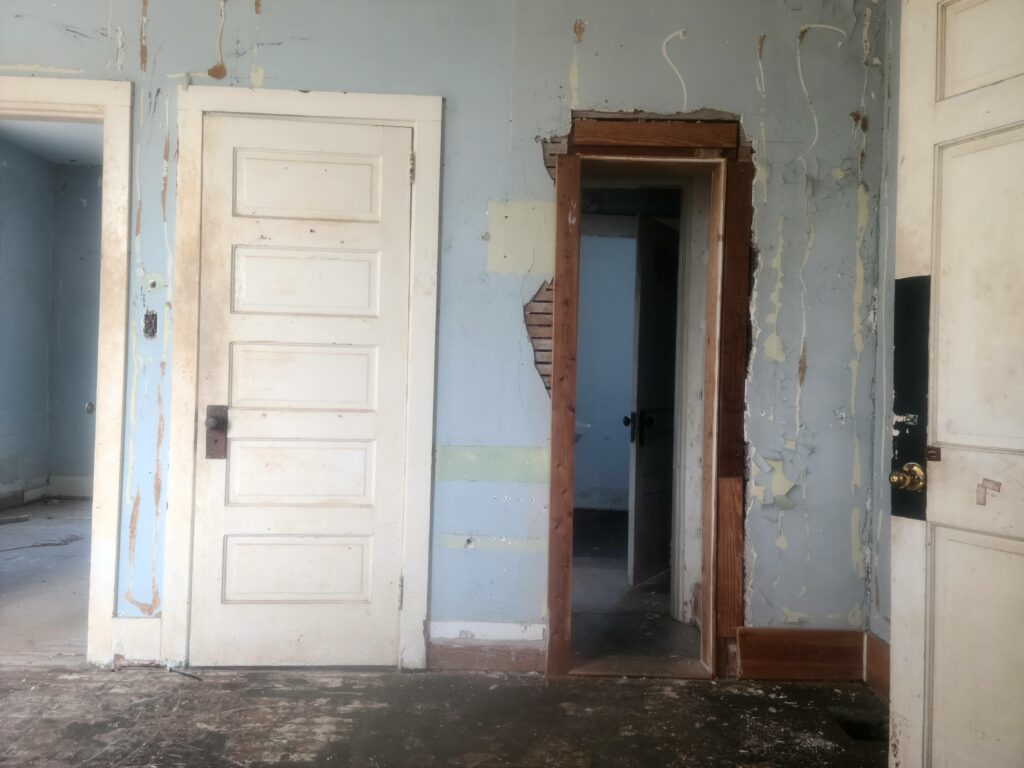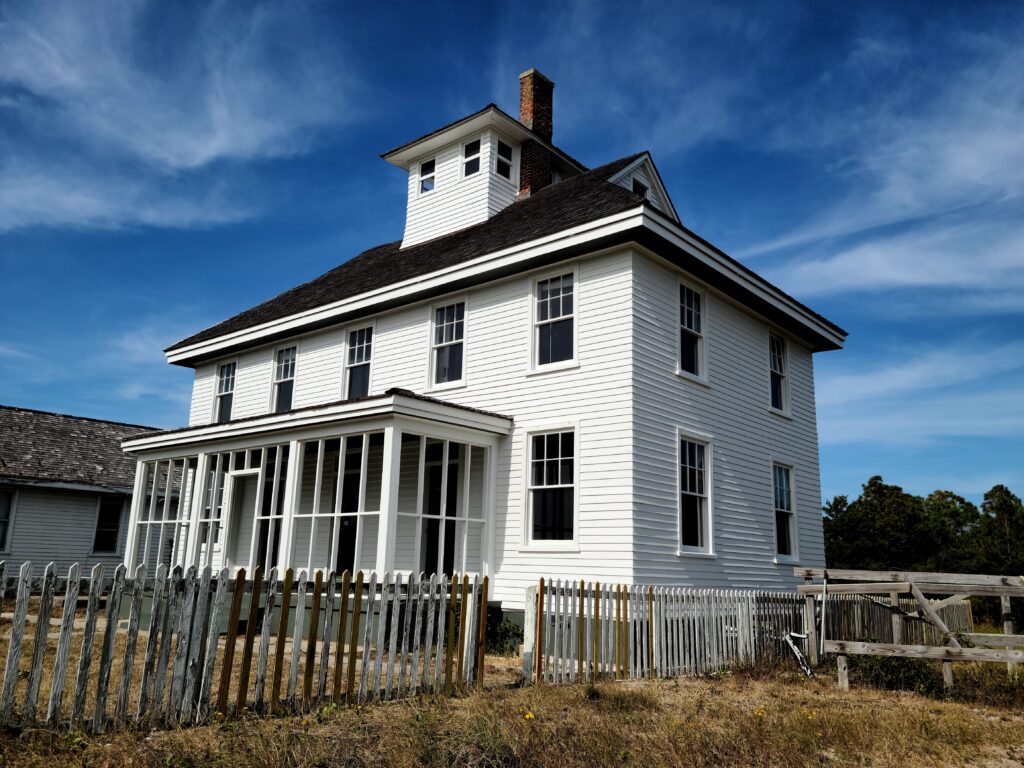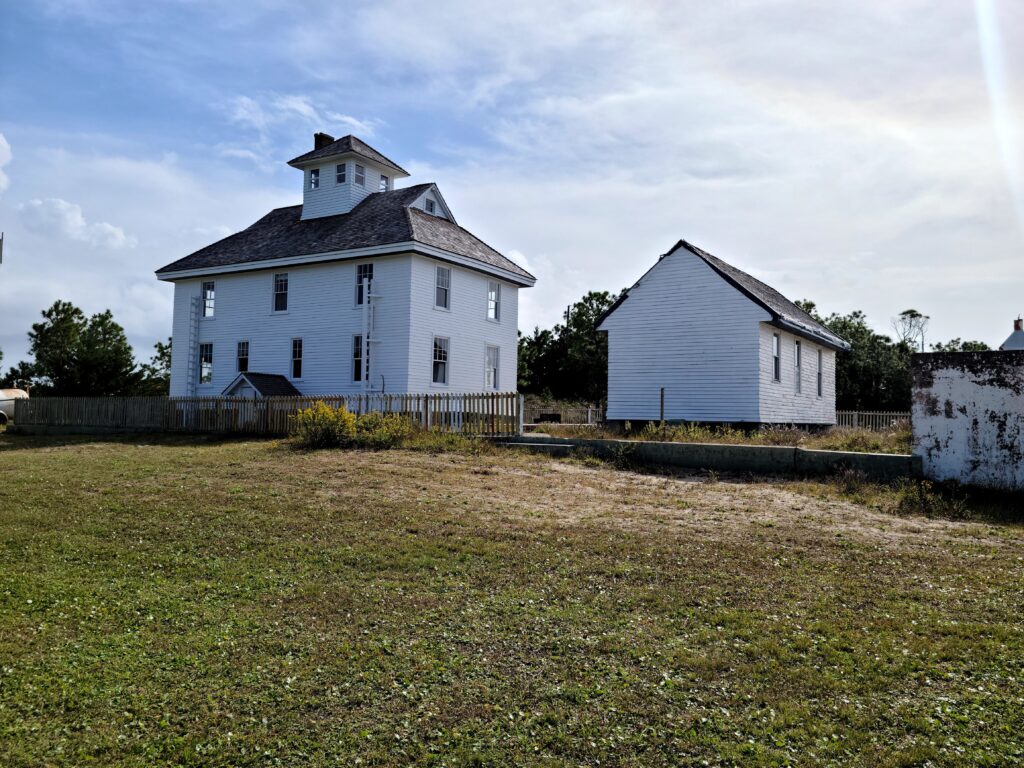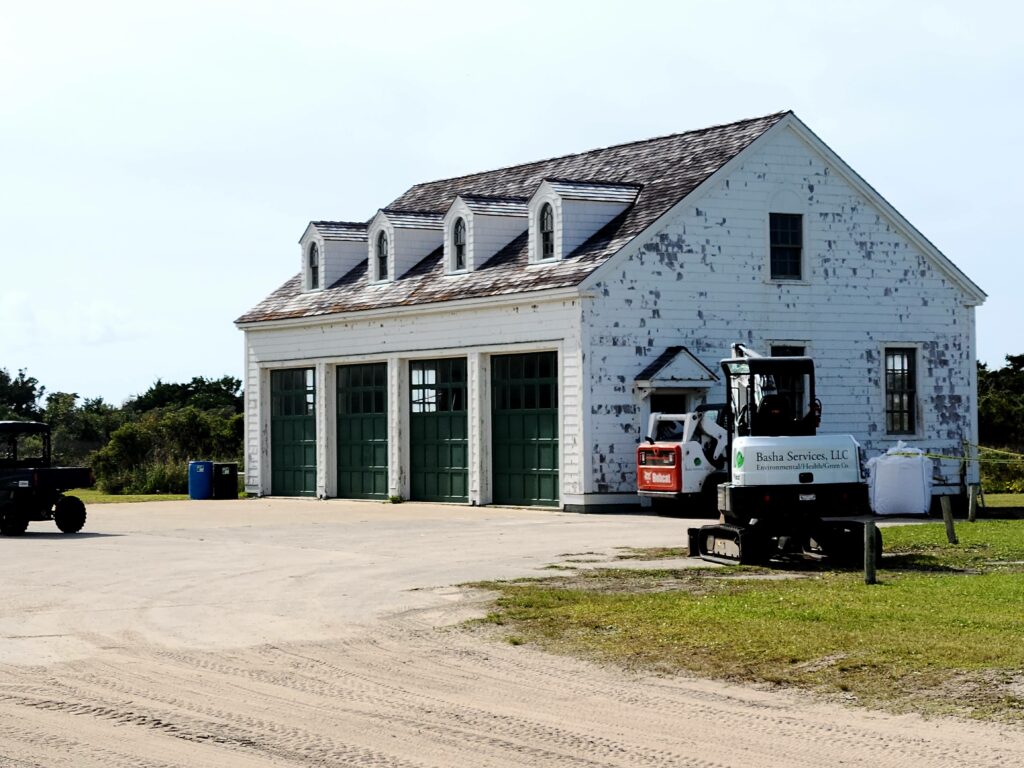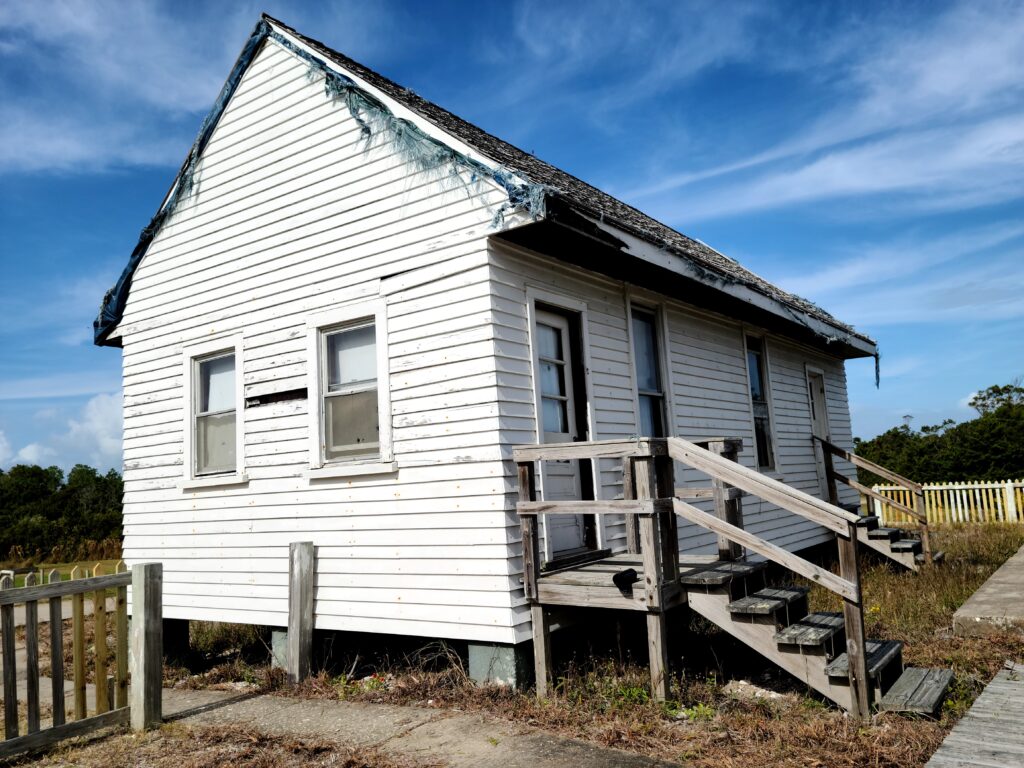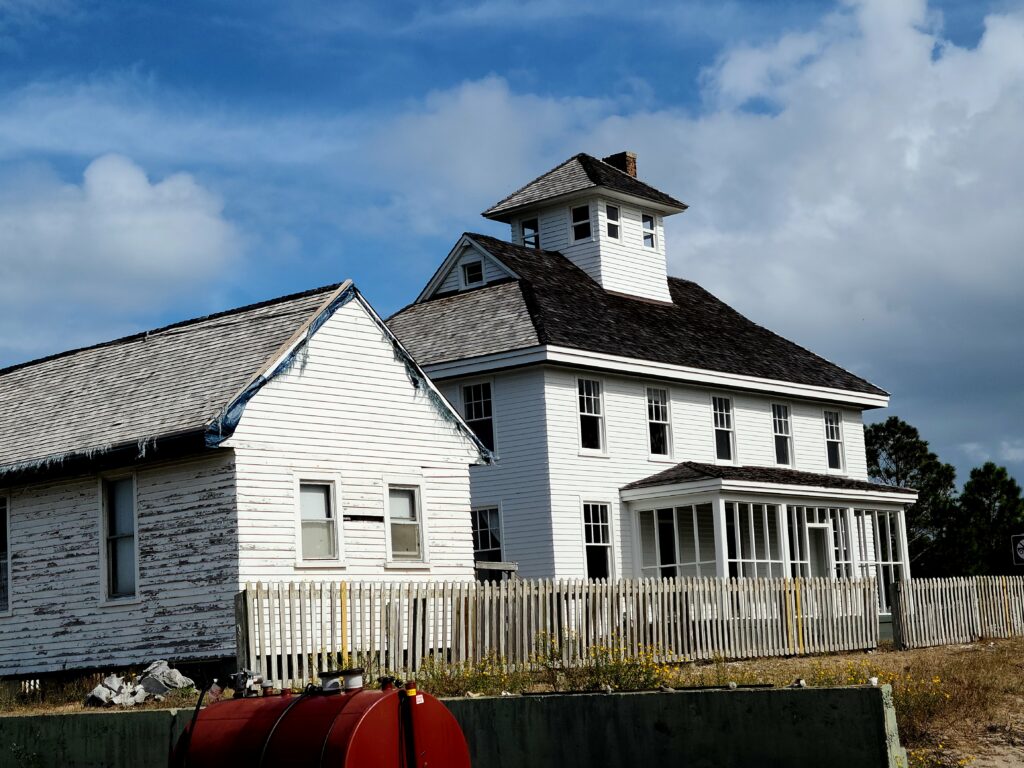Cape Lookout National Seashore
131 Charles Street
Harkers Island, NC 28531
252-728-2250
There were three US Lifesaving Stations within the present Cape Lookout National Seashore:
Cape Lookout Station on the southern end (built in 1887 and replaced in 1917); Core Bank Station (built in 1895 and destroyed by fire in 1968); and the Portsmouth Station on the north end (built in 1894). The two Cape Lookout station buildings and the 1894 Portsmouth station
are all on the National Register of Historic Places. Of the three, only the Portsmouth station is open to the public.
Cape Lookout Station
Construction of the first structure, an 1882-type station, was completed in August of 1887. A cookhouse was added in the fall of 1892.
In 1916 a new station was proposed, and it was determined that the original location was the best available. In 1917, the old station house was moved about 60 feet to the northwest during construction of the new Chatham-type station. The new building was occupied on January 24, 1918. A boathouse was added in 1924. The original cookhouse remained in use.
In the early 1920s the original 1887 station was remodeled and used as living quarters for the Navy’s Radio Compass Station, still just 60’ away from the new station. It was used for this purpose until the end of WWII. Some of the changes included partitioning of the dormitory and the boat room, removal of the boat room doors, and the addition of a two-story porch, several windows and three hipped-roof dormers.
In the 1950’s, upon automating the Cape Lookout Lighthouse, the Coast Guard made significant changes to operations at Cape Lookout Station. Several smaller buildings were demolished and in 1957 the original 1887 life-saving station building and the 1923 boathouse were offered for sale. The 1887 station was purchased, moved about 500 yards north of its original site, and used as a vacation house. The boat house was similarly moved and used as a private residence.
In 1982, the Cape Lookout Station mission and personnel were merged into the larger Fort Macon Coast Guard Station and Cape Lookout Station was decommissioned. The publicly owned station buildings and property were transferred to the Cape Lookout National Seashore in 1984. The older station and the boathouse remained in private ownership until 2003 when both buildings were turned over to the NPS.
The 2004 historic structures report describes the old station as being in “excellent condition” at the time. However, there has been significant deterioration in the years since. While no improvements have been made, basic stabilization and preservation maintenance has been conducted over the years.
In June 2000, the Cape Lookout Village historic district was listed on the National Register. The grounds around the historic and other buildings are maintained, wayside signs inform visitors of the history of the buildings, and the buildings are monitored for deterioration and vandalism. However, they are boarded up and most, except the 1917 station building, are unsafe to enter.
The 1917 Coast Guard station was used by the North Carolina Maritime Museum for environmental education, research and conservation, for a period in the early 2000s. It now sits vacant. Between 2018-2020 preservation and restoration efforts were conducted: a new roof, windows, and siding were installed, and the picket fence was rebuilt and painted. The roof on the Coast Guard-era maintenance garage was also replaced.
Portsmouth Lifesaving Station is in the Portsmouth Village National Historic District on Portsmouth Island, also referred to as North Core Bank. This Quonochontaug-type station was built in 1894 and closed in 1937. It is well maintained by the NPS and open to the public seasonally as a museum. Inside is a display of information and artifacts of the U. S. Life-Saving Service, including a replica surf boat and beach cart.
A major restoration project was approved in 2022 for the 1887 station. This will include removing additions, raising the structure one foot, a new roof, new siding, window and door replacement, and painting. Funding has been delayed, but it is now anticipated that construction will begin in early 2025.

